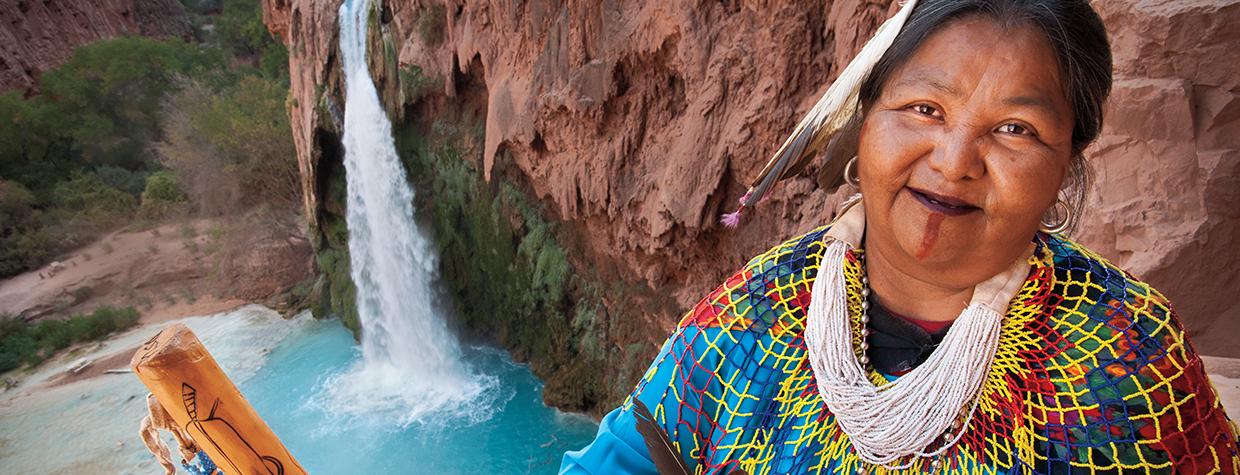When the wind stirs the cottonwoods in Havasu Canyon, it sounds as though it’s come off the ocean. Impossible, considering that it’s 543 miles to the Pacific. The wind pushes the smoke of burning sage through the air, curling it up and outward until it disappears over a sandstone lip, hundreds of feet above.
Dianna Baby Sue White Dove Uqualla keeps her senses tuned to the singing of that wind. To the secrets of the birds. To the way light plays through the leaves of the cottonwoods. She pays attention, she says, because that’s how Spirit speaks to her.
She answers with a warrior’s cry.
It comes at the end of a ceremonial blessing, after the chanting of songs that reverberate across the canyon like a pulse.
Uqualla’s conversations with the entity she calls Spirit began decades ago, after her mother died. Her father, unsure of how to raise a daughter alone, sent her to a boarding school far from the Havasupai Reservation. There, while her classmates slept, Uqualla was fraught.
She dreamed things that would eventually become reality. Songs raced through her imagination without explanation. The experiences frightened her — until a fortuitous meeting.
“One day, I was wandering around on the reservation near Peach Springs,” says Uqualla, called “Baby Sue” because of her youthful character. “It was cold, and I saw smoke coming from a chimney, so I went over and knocked on the door, and an elder woman opened it.”
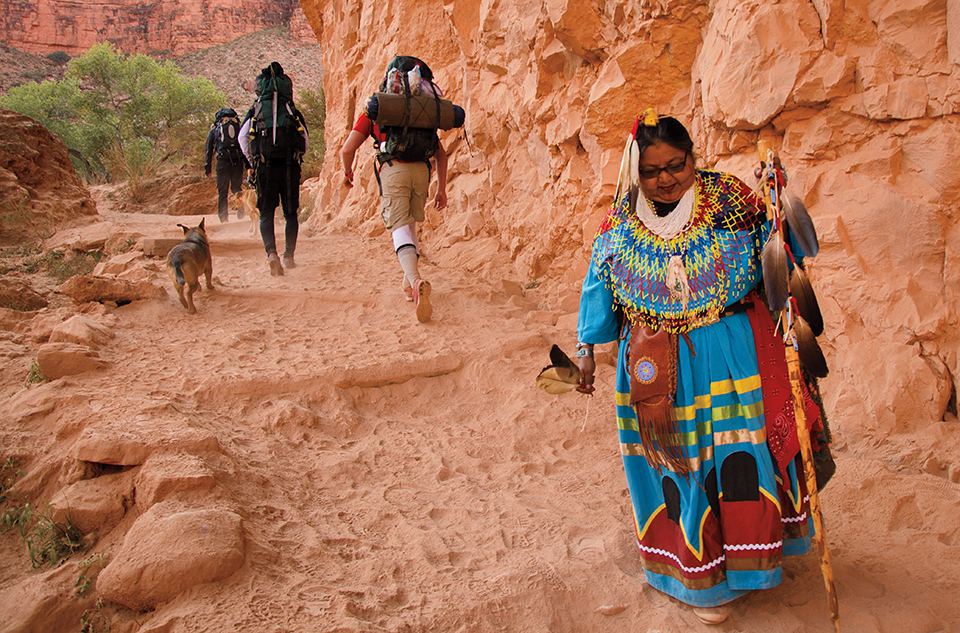
The woman invited Uqualla in and asked her what she was doing in the cold. She unfurled her troubles like a sail.
“I told her that different things were happening to me — told her about the dreams,” she says. “When I finished talking, the elder looked at me and said, ‘I am your mother’s best friend.’ ”
The elder went on to tell Uqualla that her grandfather, her mother’s father, was one of the last Havasupai medicine people.
“She told me that the medicine people went on to become the chiefs, the chairmen,” Uqualla remembers. “She said, ‘I think your grandfather is a part of you.’ ”
From that moment, Uqualla embraced what she now considers to be her gifts and began traveling across Arizona in pursuit of sharing them with others through ceremonial blessings, sweats, prayers and other sacred rituals. She goes, she says, wherever Spirit takes her, but she is happiest at home in the village of Supai, where she greets a group of visitors on a warm November afternoon.
Uqualla wears the traditional clothing of a medicine woman, from the eagle feather in her hair to the bag of herbs that hangs from her neck. Turquoise rings — traded with the Hopi — adorn fingers thick and square from working in her garden, from building the ceremonial space in which she stands. Her dress is kiwi green, striped with blue and white and topped with a multicolored shawl. It honors, she says, the changing of the seasons. Red ochre, drawn from the earth and crushed into fine powder, lines her cheeks, symbolic of the tears of her people. The thick red line below her bottom lip is a reminder of balance.
When she speaks, it is in the hushed, soft tone of someone at peace.
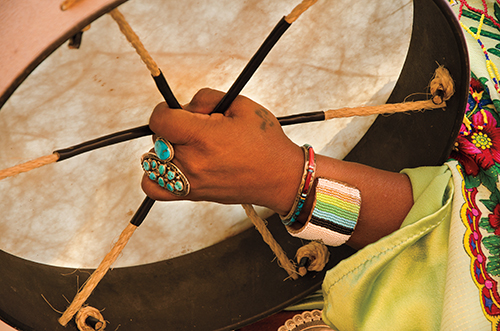
“We are blessed that you are here,” Uqualla says. “You have walked where my ancestors walked. You have moved through spirits to get here.”
There’s no telling, really, how many people have walked the 8 miles from the Hualapai Hilltop to the village of Supai. Remote and exposed, the trail begins in a series of switchbacks, descending more than 1,500 feet in less than a mile. Trains of pack animals, horses and mules, run roughshod, wrangled by Havasupai vaqueros — modern-day Gus McCraes in Nike T-shirts.
Sometimes, when the mule trains ride past, the air grows so thick with dust you can’t see but a few feet in front of you. After it clears, though, settling on boulders and in crevices that have worn the grit of passersby for hundreds of years, and after miles of rock and dirt and only the occasional spot of shade, it’s plain to see that you’re standing someplace special.
Havasu Creek appears around a bend, though it’s heard first — the rushing of that impossible ocean, so many miles away. Lined by cottonwoods and the sandy trail that leads to the village, the creek is more than just blue-green, as the Havasupais’ nickname, “People of the Blue-Green Water,” would have you believe. It’s the mingling of absinthe and phthalo blue, lime spilled into sky. Clearer than a swimming pool and cold as Lake Superior in the spring, the creek and the waterfalls it feeds — Upper Navajo and Lower Navajo, cut into the earth between the village and the campground, 2 miles downstream; and Mooney, Havasu and Beaver, beyond the campground — are the lifeblood of the tribe. Tourism is its primary source of income, even after the 2008 flash flood that washed away the pools below Mooney Falls and closed the campground for nearly a year.
For Uqualla, the creek means she’s home.
“Every time I go somewhere, the canyon calls me back,” she says. “I hear and smell Supai when we get near the creek, and my heart cries with joy.”
A tributary canyon of the Grand, Havasu is the 518-acre ancestral and modern home of its namesake people. There, the Havasupai had little interaction with European or American explorers until the late 1770s, when Spanish missionary Francisco Garcés rode in. His journals later revealed Havasupai outposts as far east as the Moenkopi Wash, near Tuba City. Indeed, the tribe once ranged from the Grand Canyon to Bill Williams Mountain to the Little Colorado River.
When Teddy Roosevelt determined that the Grand Canyon would become a national park, he demanded that the Havasupai move from their traditional spring and summer home at Indian Garden, where they had harvested beans, squash, melon and corn for generations. By the time Woodrow Wilson signed Senate Bill 390 to authorize the designation in 1919, many Havasupai had already ventured out of the Canyon and into surrounding areas. One man, known by his Anglo name of Billy Burro, refused the president’s order and remained at Indian Garden with his wife, Tsoojva, until the National Park Service forced the couple out in 1928. There were others like Billy and Tsoojva — men like Yavñmi’ Gswedva, who, instead of moving out of the park, moved into a cave higher up the Bright Angel Trail.
“At one point in our history, many of the medicine people were shunned [by the tribe]. ... But the tribe didn’t realize that those medicine men had fathered children, that the bloodlines remained. Now, I have to carry on the tradition. It’s not a position of power. It’s the acknowledgment of how we treat Mother Earth, how we treat the human people.”
The Havasupai were relegated to Havasu Canyon until 1975, when Congress restored an additional 185,000 acres of canyon and rim territory to the tribe.
“In our canyon home and up on the plateau, there are places where my ancestors stayed and survived,” Uqualla says. “I go to these places and I sing to the mother, to the Earth. It is told through our elders: You sing four songs, you give them to the land. Everywhere I go, I leave these songs. I say, ‘Yes, I remember you. I remember the Native people. I am thankful that you are still here.’ ”
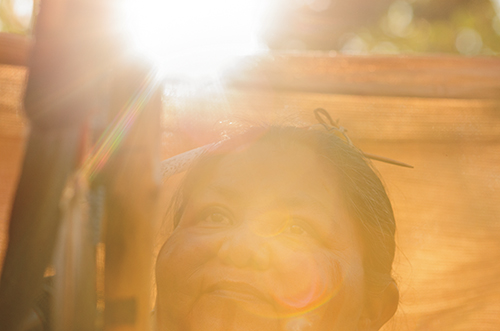
Uqualla travels, on occasion, with the Thirteen Grandmothers, women representative of global indigenous tribes — the Maori, the Cheyenne, the Mazatec among them. Together, they speak on behalf of not only their people, but also humankind.
“We have to come together in a peaceful way,” Uqualla says. “It can be done. We have to slow down and get back into the balance of the world.”
One such trip took Uqualla to the Middle East. She hadn’t a plan or a plane ticket, just a calling, she says, from Spirit. So, she hitchhiked from the Hilltop to Kingman. From there, she rode a bus to Las Vegas. That’s when she received word from the organization she traveled with that a plane ticket was waiting for her. So she flew — for the first time ever — to Israel. From there, she visited Gaza and Jordan, as well.
“I was honored to be there on behalf of my elders,” Uqualla remembers. “We went to all of the places in the Bible, and for me that was significant because even though I practice a traditional way of life now, I was raised Christian.”
And she wasn’t afraid, not even when escorted by armed soldiers into Gaza.
“You have to have faith,” she says. “No matter how extreme a situation is, challenges can become lessons.”
At 53, Uqualla has learned more than a few lessons of her own. Though she doesn’t divulge details, she says that she lived a hard life before she settled in Supai, before her conversations with Spirit became everyday occurrences.
She bore a son but didn’t stay attached to his father. As she aged, her health declined. Once an avid equestrian, she weeps over the loss of her ability to ride, the result of a recent lupus diagnosis. Now, instead of journeying into and out of the canyon on horseback, she’s forced to ride in one of the helicopters that carry supplies and tourists several times each week. They land adjacent to her home, kicking up dust and the sweat and stench of grazing mules with a whirring so loud, the violent grind of it echoes long after the chopper has moved up and away.
She’s watched the young members of her tribe turn to iPods and satellite television for entertainment, watched as they shed their traditional clothes in favor of hoodies, baggy jeans and baseball caps. Some of them have given up their native language in favor of the Anglo slang they learn at boarding school and from movies. She served as a probation officer; she taught Havasupai youth; and she slowly gained respect for her spirituality among tribal elders, eventually becoming an elder herself.
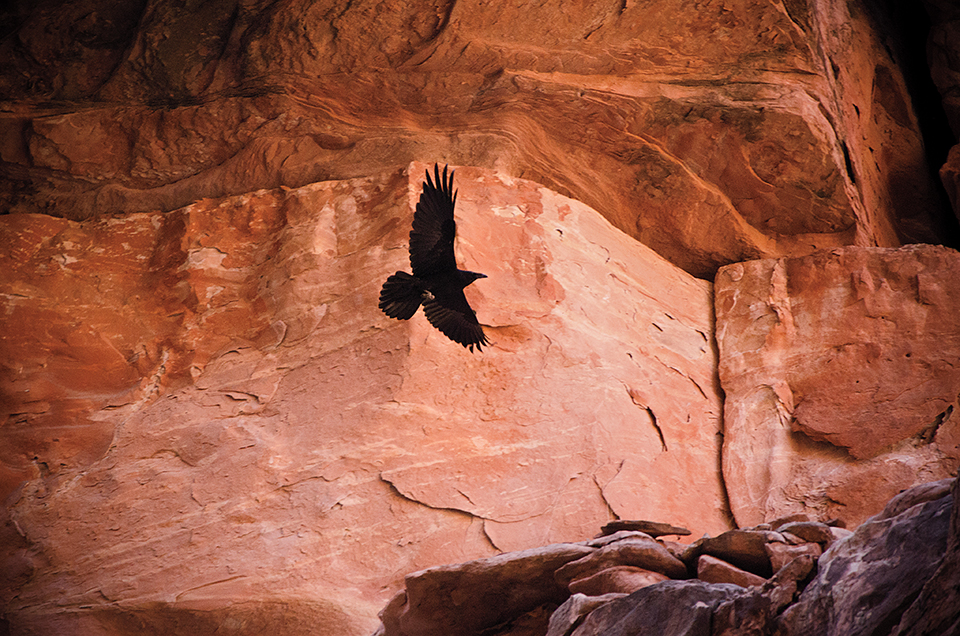
“At one point in our history, many of the medicine people were shunned [by the tribe],” Uqualla says. “But the tribe didn’t realize that those medicine men had fathered children, that the bloodlines remained. Now, I have to carry on the tradition. It’s not a position of power. It’s the acknowledgment of how we treat Mother Earth, how we treat the human people.”
She believes, too, in innate human goodness, in finding peace, although she knows it doesn’t come easy.
“Spirit is waking up the people,” she says. “It is telling us that we have to love and help each other. Look at what happened after Hurricane Sandy. There could have been [more] looting, but people helped each other.”
Uqualla is quick to cry. Her eyes well, then close, leaving the sheen of salt and water in her lashes as a tear runs parallel to the ochre on her cheek.
“We need that in this world — understanding,” she says. “We need to understand the value of a touch, a laugh, that it’s OK to cry.”
As her words drift away, a bird calls another across the canyon. The wind rouses the sage smoke again. And Dianna Baby Sue White Dove Uqualla smiles.

